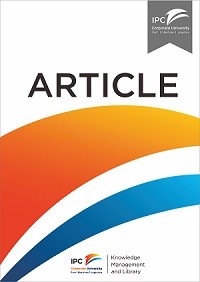Article
Forecasting container throughput using aggregate or terminal-specific data? The case of Tanjung Priok Port, Indonesia
We propose a new approach to forecasting total port container throughput: to generate forecasts based on each of the port’s terminals and aggregate them into the total throughput forecast. We forecast the demand for total container throughput at the Indonesia’s largest seaport Tanjung Priok Port, employing SARIMA, the additive and multiplicative Seasonal Holt-Winters (MSHW) and the Vector Error Correction Model (VECM) on the monthly port and individual terminal container throughput time series between 2003 and 2013. The performance of forecasting models is evaluated based on mean absolute error and root mean squared error. Our results show that the MSHW model produces the most accurate forecasts of total container throughput, whereas SARIMA generates the worst in-sample model fit. The VECM provides the best model fits and forecasts for individual terminals. Our results report that the total container throughput forecasts based on modelling the total throughput time series are consistently better than those obtained by combining those forecasts generated by terminal-specific models. The forecasts of total throughput until the end of 2018 provide an essential insight into the strategic decision-making on the expansion of port’s capacity and construction of new container terminals at Tanjung Priok Port.
Ketersediaan
Informasi Detail
- Judul Seri
-
International Journal of Production Research
- No. Panggil
-
ATC LO FAN f
- Penerbit
- United Kingdom : Taylor and Francis., 2016
- Deskripsi Fisik
-
17 p.
- Bahasa
-
English
- ISBN/ISSN
-
1366-588X
- Klasifikasi
-
LO
- Tipe Isi
-
-
- Tipe Media
-
-
- Tipe Pembawa
-
online resource
- Edisi
-
2016
- Subjek
- Info Detail Spesifik
-
-
- Pernyataan Tanggungjawab
-
Gu Pang
Versi lain/terkait
| Judul | Edisi | Bahasa |
|---|---|---|
| a Comparison of traditional and neural networks forecasting techniques for container throughput at Bangkok Port | Volume 27 Number 3 December 2011 pp. 463-482 | id |
| Empirical analysis of influence factors to container throughput in korea and china ports | Volume 27 | en |
| The MED rule: the interdependence of container throughput and transhipment volumes in the Mediterranean ports | VOL. 26, NO. 2, 175 ± 193, 1999 | en |
| Hybrid approaches based on SARIMA and artificial neural networks for inspection time series forecasting | en |
Lampiran Berkas
Komentar
Anda harus masuk sebelum memberikan komentar

 Karya Umum
Karya Umum  Filsafat
Filsafat  Agama
Agama  Ilmu-ilmu Sosial
Ilmu-ilmu Sosial  Bahasa
Bahasa  Ilmu-ilmu Murni
Ilmu-ilmu Murni  Ilmu-ilmu Terapan
Ilmu-ilmu Terapan  Kesenian, Hiburan, dan Olahraga
Kesenian, Hiburan, dan Olahraga  Kesusastraan
Kesusastraan  Geografi dan Sejarah
Geografi dan Sejarah